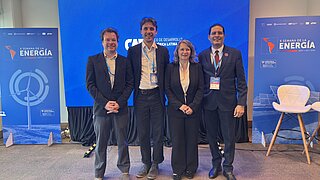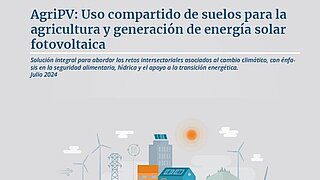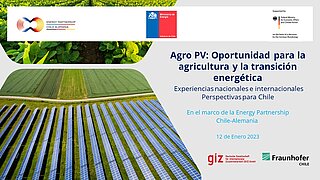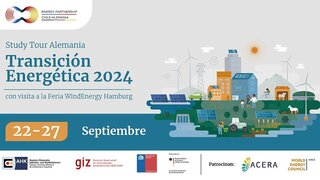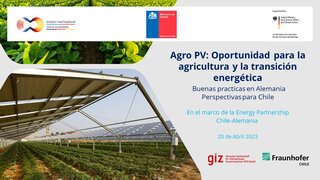AgriPV and Floating PV
Combined land use for agriculture and energy generation through the installation of solar panels not only contributes to the decarbonisation of the energy sector, but also benefits crops by maintaining more moisture and soil quality and reducing the use of irrigation water.
The installation of floating photovoltaic panels on water surfaces can also be an opportunity to contribute to the energy transition by harnessing solar radiation to generate energy while protecting the water by reducing evaporation from intensive solar radiation.
What are AgriPV systems?
Climate variability affects agricultural production in Chile, especially in regions where water availability is critical. To address these vulnerabilities, climate change adaptation and mitigation measures need to get implemented. In this context, AgriPV is an innovative combination of agriculture and solar photovoltaic energy able to address some of the cross-sectoral challenges associated with climate change in the country.
This technology consists in installing solar panels on surfaces used for agriculture. That´s how energy is generated near or at points of demand, providing at the same time shade and protection for intensive cultivation and fruit crops against evapotranspiration, hail and frost. This maintains the moisture and quality of the soil as it does not dry out excessively, which in turn helps to significantly reduce the need for irrigation of crops. In a country with increasing water scarcity, reducing the use of water resources is key.
In this way, agri-photovoltaic systems contribute to the energy transition while promoting food and water security.
However, in Chile there is still a lack of a regulatory framework for the implementation of agri-photovoltaic systems and land sharing. Therefore, in collaboration between Fraunhofer Chile Research and GIZ Chile, in the framework of the Energy Partnership Chile-Germany, and together with the University of Federico Santa Maria, a policy brief on agro-photovoltaic systems and their application in Chile was prepared. This document highlights the importance of this innovative technology and suggests concrete policy recommendations to promote its use in Chile, including legal, financial and collaborative aspects.
Floating photovoltaic panels
The installation of solar panels on water surfaces has several advantages, including the use of surfaces that are not normally used in other areas. On the one hand, floating photovoltaic panels reduce the evaporation of water by using solar radiation, while the water has a cooling effect on the panels. This effect contributes to a better performance of the solar panels even during very hot seasons, which increases the efficiency of the panels.
However, Chile does not yet offer an adequate regulatory framework for the implementation of these floating photovoltaic systems, which also takes into account specific situations such as the seasonal variability of the water level, the need for water bodies available for e.g. water planes and fire brigades in case of forest fires or for irrigation.
For this reason, the Energy Partnership Chile-Germany promotes research on floating photovoltaic systems, for example by organising events to address the issues in the Chilean context.
AgriPV: Land sharing for agriculture and solar PV power generation
Downloads
- Manual para el Desarrollo de Proyectos Agrivoltaicos en Chile (38 MB, PDF)
- AgriPV ─ Policy Brief GIZ, Fraunhofer, USM (1 MB, PDF)
- Fraunhofer_Chile_Agro_PV_Oportunidad.pdf (5 MB, PDF)
- Fraunhofer Chile: Flotante PV: Resultados de Investigación y Potencial en Chile (4 MB, PDF)
- Indo_Forum_APV_BestPracticesInternacional.pdf (11 MB, PDF)
